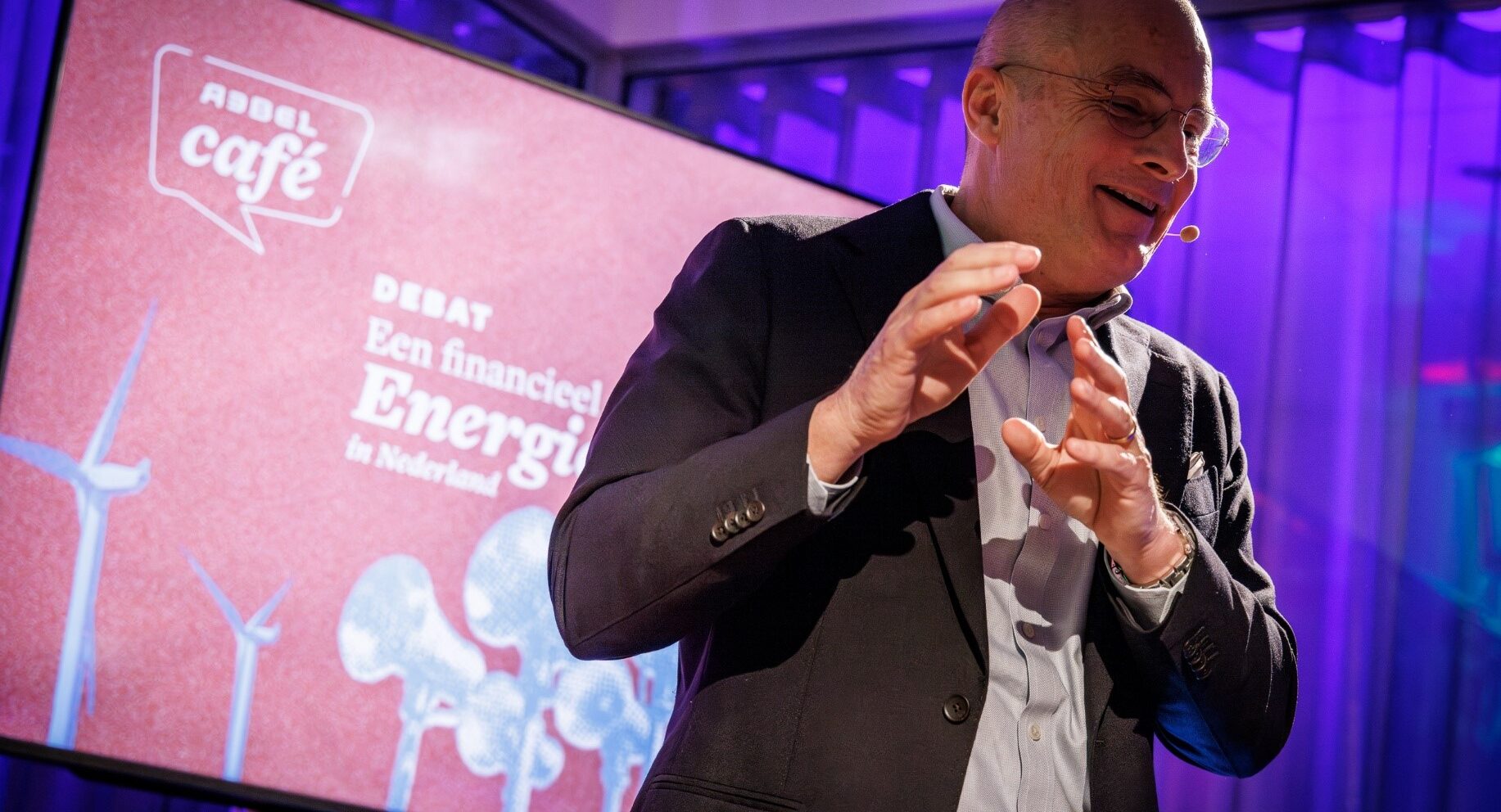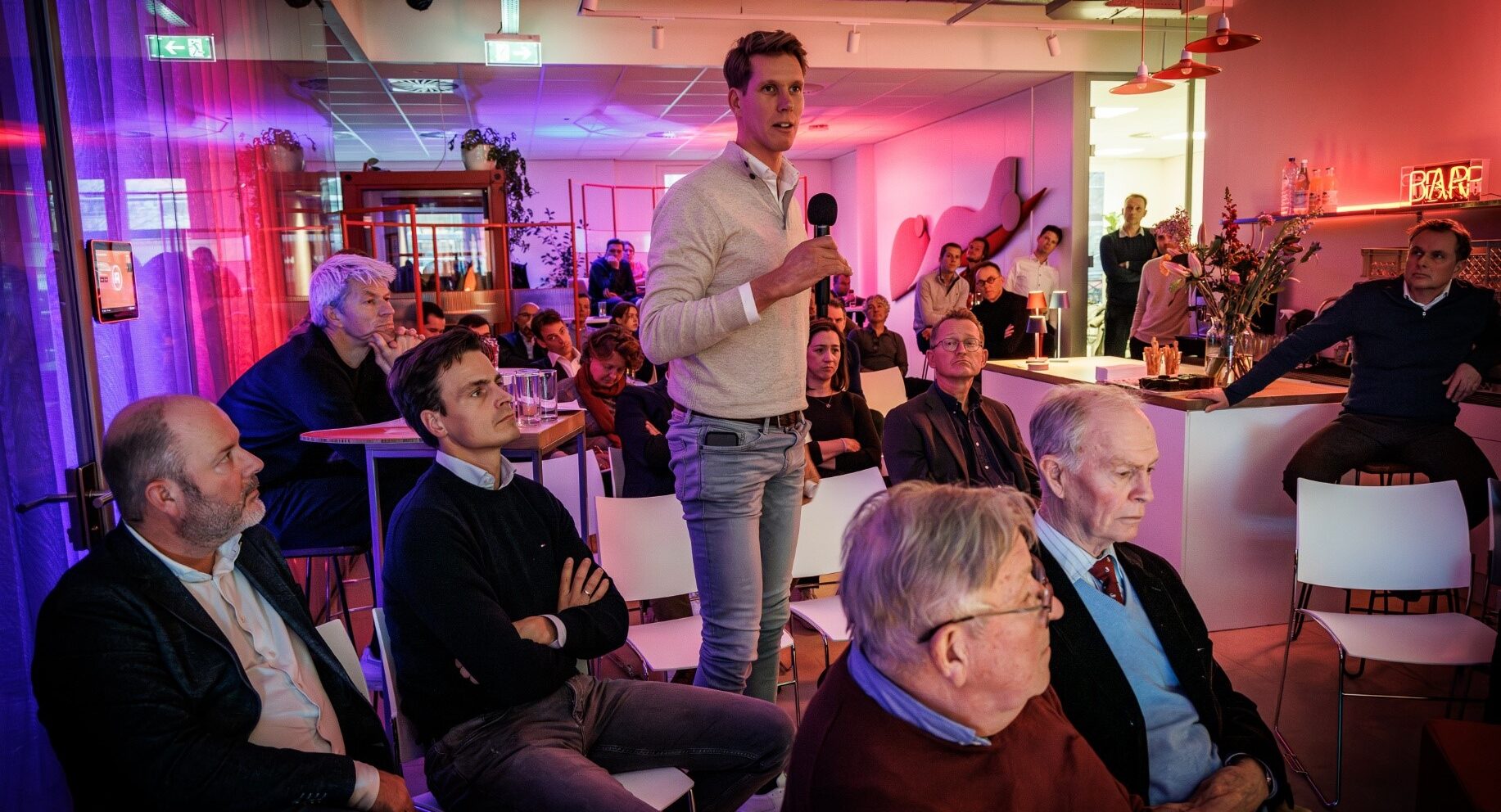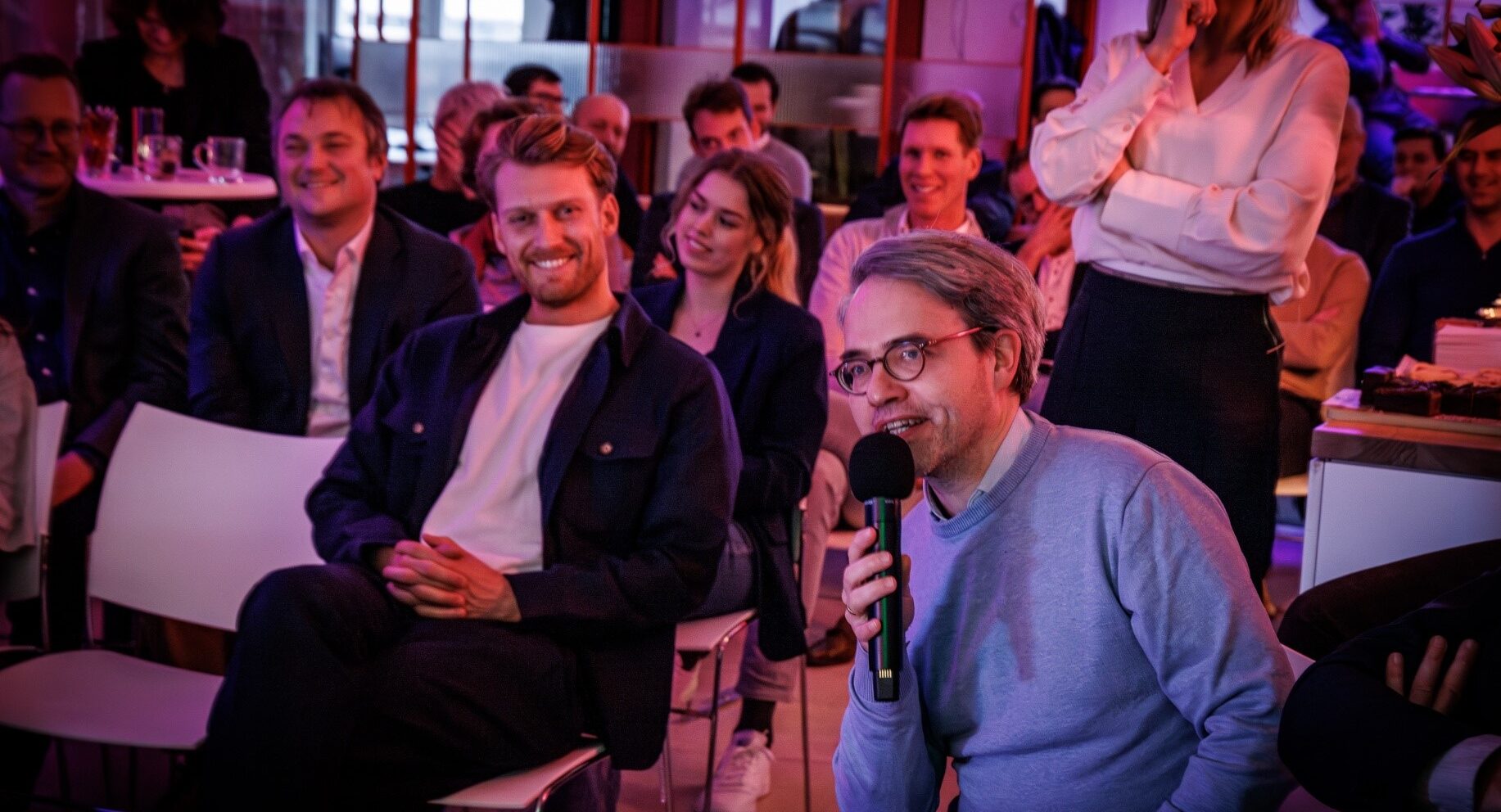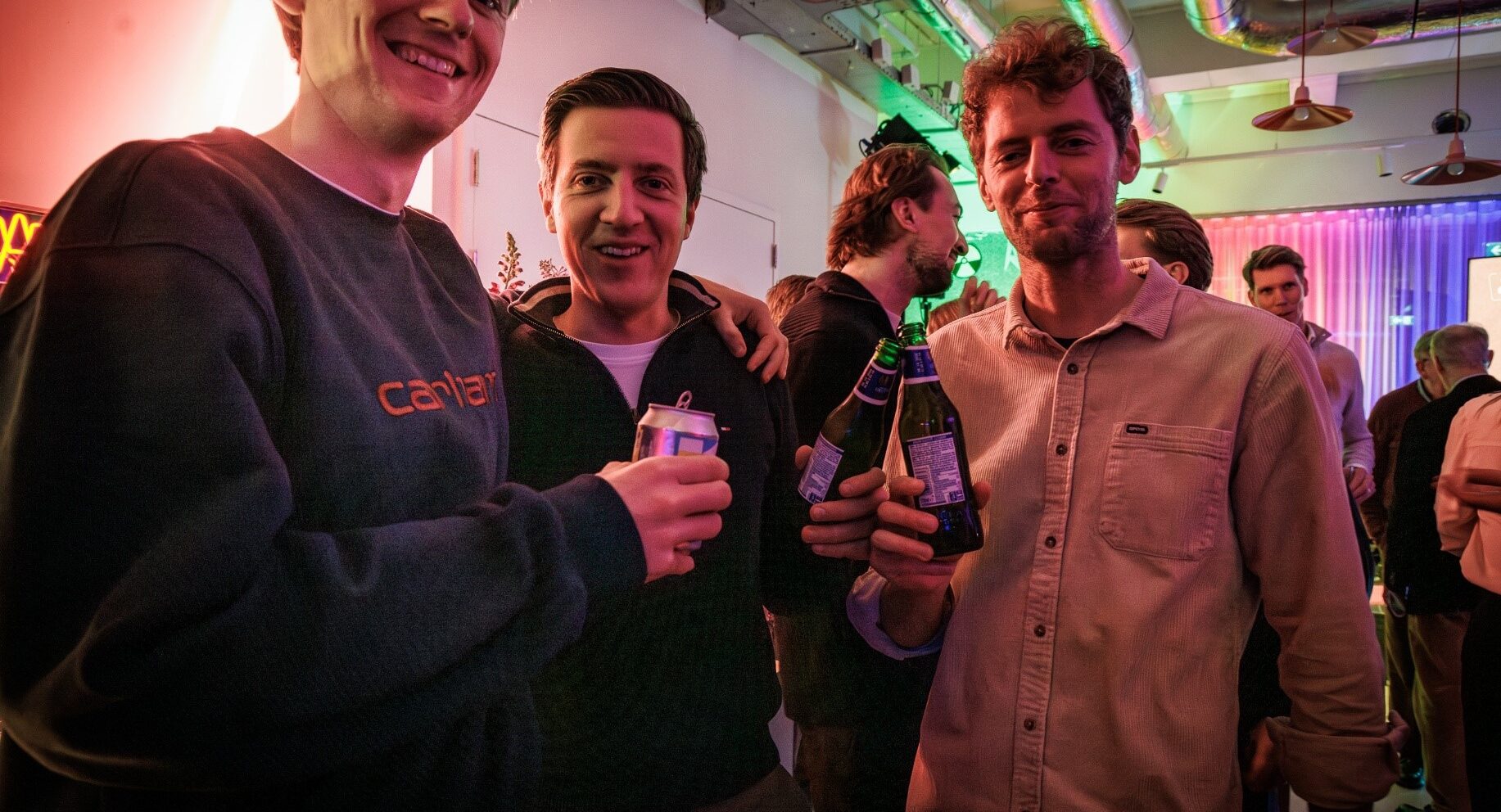Debate: A financial perspective on the energy transition in the Netherlands
renewable energy
On Friday afternoon, 24 January, the very first Rebel Café took place. For the occasion, our office was transformed into a cozy café, where forty business relations and twenty Rebels came together to discuss the future energy system of the Netherlands. Floor Hooijman from Rebel moderated the afternoon, while guest speakers Wim Turkenburg and Jan Vos shared their expert insights. The result was a lively and substantive discussion about the energy challenges ahead.
The role and costs of nuclear energy
The first guest speaker was Wim Turkenburg, emeritus professor of Science, Technology & Society (STS) at Utrecht University and consultant on energy and environmental issues (WTEEC, Amsterdam). He is also chairman of the board of the International Energy Initiative (IEI) in Princeton, USA.
Wim guided the audience through a nuanced exploration of the necessity and prospects of nuclear energy, starting with the facts. Today, nuclear power generates roughly 9% of the world’s electricity and 4% of total energy consumption, produced by 408 reactors with an average lifespan of 32.2 years. In the Netherlands, the nuclear landscape is small but varied, including a nuclear power plant, a radioactive waste storage facility, and a uranium enrichment plant.
1. What is the outlook for large nuclear power plants in the Netherlands? And for SMRs (Small Modular Reactors)?
According to Wim, an important starting point is the 2022 strategy formulated by Rob Jetten, then Minister of Economic Affairs and Climate Policy. The strategy envisions a future Dutch energy system that meets most of its own annual electricity demand while producing a strategic amount of domestic hydrogen. Nuclear energy is likely to play a role in achieving this, but several key considerations remain.
First, nuclear power plants require very high investment costs. A new nuclear plant in the Netherlands with a capacity of 1,600 MWe is estimated to cost €12.5–20 billion (2024 prices). For the four plants referenced in the Outline Agreement, the total cost would be around €80 billion.
Although small modular reactors (SMRs) have lower absolute costs, they are not yet cheaper per installed kWe. As long as alternatives such as hydropower, bioenergy, and fossil fuel plants with CCS are available, nuclear construction costs will need to drop significantly to become competitive.
In addition, the operating time of nuclear power plants is decreasing because policy increasingly prioritizes renewable energy such as solar PV and wind. As these technologies become cheaper, nuclear plants earn less revenue per kWh produced, making it harder to recover their high investment costs.
Wim also identified 17 other obstacles to building new nuclear plants in the Netherlands, including the limited nuclear expertise in the country and the challenges of securing financing for construction.
The key takeaway? Consider nuclear energy, but be realistic. Building a new nuclear power plant is far more expensive and time-consuming than political debates often suggest. A new plant is not expected to deliver electricity to the grid before 2040, and commercial small modular reactors (SMRs) are unlikely to be operational in the Netherlands before 2045.
2. Can nuclear energy be used flexibly?
One participant at the café asked whether nuclear power plants could be used flexibly – for example, to help balance the intermittency of renewable energy sources like wind and solar – instead of serving only as a baseload supply.
Technically, nuclear plants can operate flexibly; design requirements allow them to ramp up and down between 30% and 95% of capacity. However, this comes with challenges: flexible operation significantly increases the cost per megawatt-hour, which is already higher than other technologies even at full capacity.
According to Wim, deciding the most effective future use of nuclear energy – baseload or flexibility – is not straightforward. It depends on factors such as the energy mix, cost structure, and the future role of renewables. These questions will need to be carefully modeled to make informed choices.
3. How do different generation techniques relate to raw material use, and could this be an argument in favour of nuclear energy?
At the café, participants discussed how raw material use differs between energy technologies. Renewable sources like solar and wind, along with the batteries needed for storage, require large amounts of scarce materials such as lithium and cobalt. Extracting these materials has a significant environmental impact and creates import dependencies.
The situation is different for nuclear energy. While uranium must also be extracted and imported from outside the EU, the amount needed per megawatt-hour of electricity is much smaller than the materials required for renewables. This makes nuclear energy potentially more attractive in terms of raw material efficiency and reducing import dependency.
The offshore wind energy roadmap
After the break, Jan Vos took the floor. A Dutch entrepreneur, Jan served in the House of Representatives from 2012 to 2017, where he helped pass legislation enabling the closure of all Dutch coal-fired power plants and developed an ambitious plan to generate 10 GW of wind energy. He is currently chairman of NedZero, vice-chairman of the NVDE, and a board member of TKI Offshore Energy.
Jan shared his first-hand insights into sustainable energy developments, highlighting both successes and challenges. For example, the cost of offshore wind energy has dropped sharply in recent years to around 5 pence per kWh, and the Netherlands has built a strong offshore industry with expertise that can be applied internationally.
However, recent changes, such as rising interest rates, inflation, and supply chain disruptions, have shifted the landscape. In addition, complex tender conditions, including ecological requirements, make the process more challenging.
Jan also highlighted technological advances in the sector. Wind turbines are becoming increasingly larger, but rapid innovation brings challenges. Manufacturers often don’t have enough time to fully test new models, which can lead to teething problems, and the push for shorter payback periods adds additional pressure.
He also addressed the broader impact of the energy transition in the Netherlands. This year, the country’s CO₂ emissions fell by 4%, partly due to the relocation of industrial activities abroad. Heavy industry faces capacity constraints on the electricity grid, but the electrification of industrial processes is becoming feasible for an increasing number of applications.
Jan’s story painted a realistic yet hopeful picture of the complex journey toward a sustainable energy system.
Debate: The energy system of the future
After Jan’s presentation, the debate came alive. Many questions were asked and ideas shared. One key topic was former Minister Jetten’s proposal: should the Netherlands aim to meet its entire energy demand domestically, or would it be better to rely on the European electricity grid and energy system?
The current marginal cost system was also discussed. Last year, there were around 400 hours of negative electricity prices, which reduces the incentive to invest in new capacity. Participants also debated whether the market system should be adjusted to ensure security of supply.
The affordability and capacity of the electricity distribution network were also highlighted as major challenges. How can the network remain affordable, especially compared to neighboring countries? Should the Netherlands adopt a capacity mechanism, as some other countries have done? And is there a real risk of blackouts by 2035?
The discussion also touched on the risk of future offshore wind tenders failing. One potential solution is a two-sided Contract for Difference (CfD), combined with measures to stimulate demand, such as product standards for green steel, but implemented on a level playing field. Participants agreed that policy continuity is just as important.
One key conclusion became clear: electricity supply is growing faster than demand, creating a temporary paradox. On one hand, demand is falling due to energy savings, the partial relocation of industry abroad, and price sensitivity. On the other hand, increasing electricity demand is essential for the energy transition.
This raises important questions: How should electrification be shaped? Will tailor-made agreements succeed, or have they already failed? The discussion highlighted the need for a strategic approach to electrification and a strong industrial policy. Overall, electricity demand is not expected to rise significantly until after 2030.
In a nostalgic moment, the term “wobble current” came up, a reference to the irregular alternating current in the early days of electricity supply. While the term puzzled some of the younger participants, it also served as a reminder that certain challenges in the energy system have persisted for a long time.
Conclusion: Entry point into the energy transition
Jan-Coen van Elburg closed the afternoon with a personal story about his own “entry point” into the energy transition: the creation of Rebel’s Energy Team. He emphasized that the energy transition is not just a technical challenge, but also a financial, economic, and social one. Rebel saw this as a logical entry point into the market, and today dozens of Rebels are actively shaping the energy transition. He thanked the speakers and left the audience with a question to ponder during the drinks reception: What was your entry point into the energy transition?
For some attendees, the answer was simple: “When I started working at Rebel.” After all, Rebel is involved in many areas of the energy transition discussed during the café, financing solar parks, batteries, hydrogen projects, offshore wind tenders, as well as developing policy on financing and subsidy instruments. Please reach out to us if you’d like to discuss these topics further!
Finally, for those interested in further reading, here is a debate between two American bloggers who explore the challenges of the energy transition, many of which were also discussed at the Rebel Café:
https://www.noahpinion.blog/p/let-go-of-the-nuclear-retrofuture
https://www.slowboring.com/p/noah-smith-is-too-down-on-nuclear
https://www.noahpinion.blog/p/in-which-i-rebut-nate-silver-on-the






